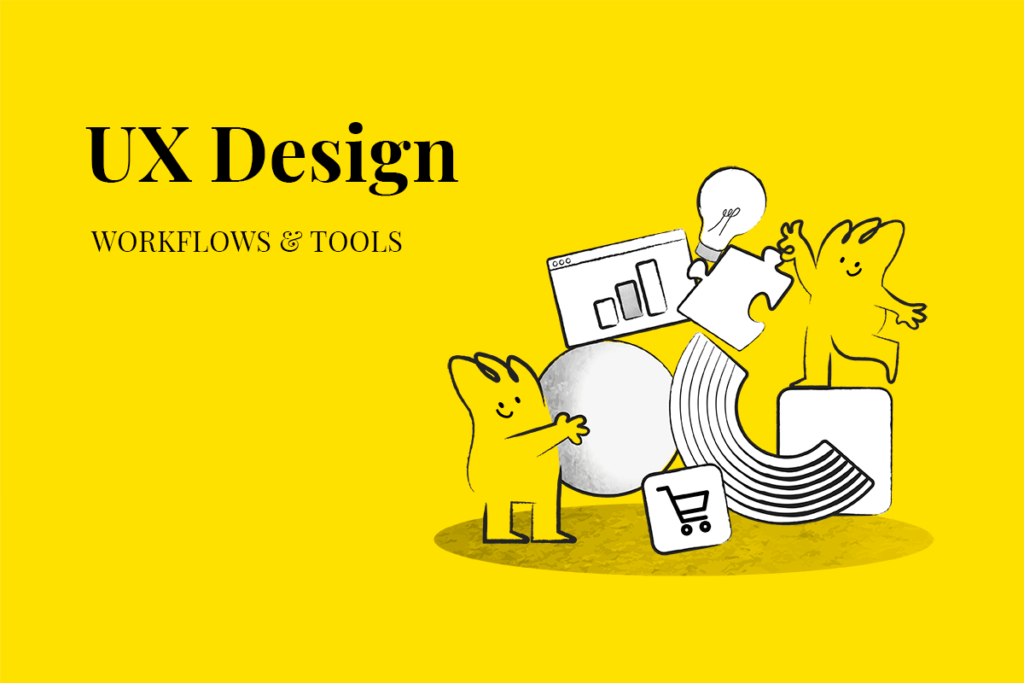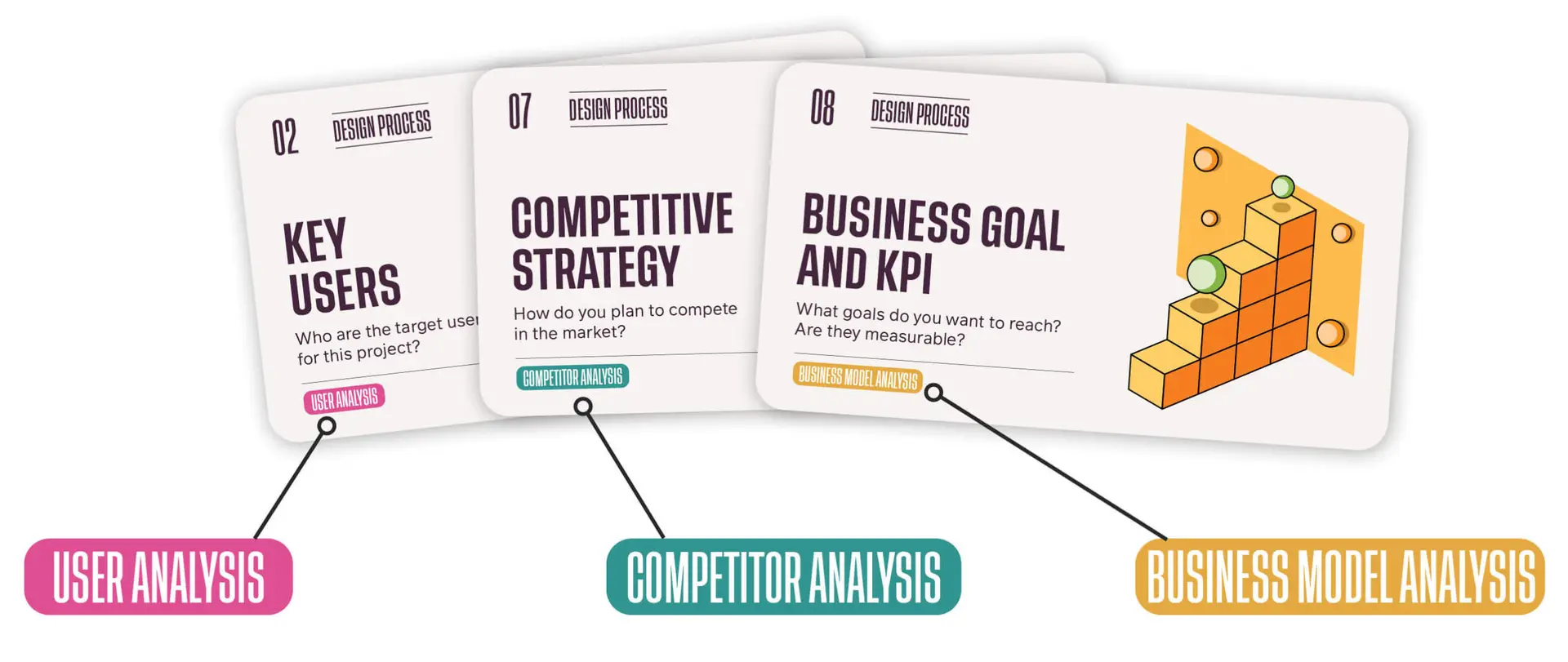Business-Aware Design: Integrating BAD Canvas, Miro & Figma

#uxdesign #designthinking #productdesign
by Sebastiano Piras
Design thinking has transformed how teams solve problems. By focusing on user needs, rapid prototyping, and iterative improvement, it has helped businesses create human-centered products that truly resonate with their audience.
However, great UX alone isn’t enough. Many products fail not because of poor design, but because they lack market fit, a sustainable business model, or competitive differentiation.
That’s where Business-Aware Design (BAD) Canvas comes in. It extends the principles of design thinking by integrating business strategy, competitive insights, and financial viability, ensuring that UX decisions also support long-term success.
When combined with Miro and Figma, BAD Canvas helps teams move from strategic ideation to real execution, aligning business goals with user experience in a seamless workflow.
From physical cards to digital workflows
Traditional UX workshops rely on physical tools such as sticky notes, whiteboards, and structured exercises to generate insights and solve problems. Card-based methodologies, like BAD Canvas, help structure this process by breaking down user needs, competitor research, and business models into manageable components.
However, as teams become more distributed, these methodologies must adapt to digital spaces. Platforms like Miro, Figma, and Notion allow teams to collaborate, iterate, and refine insights over time, rather than working with static physical boards.
Integrating card-based frameworks into digital workspaces provides key advantages:
- Frameworks evolve dynamically, teams can update insights continuously as projects develop.
- Real-time collaboration reduces silos, ensuring alignment between designers, marketers, and business leaders.
- Strategy and execution stay connected, helping teams move from ideation to delivery without losing business objectives.
BAD Canvas benefits from both approaches, offering a structured methodology while being highly adaptable to digital collaboration tools.

What makes BAD Canvas different
Traditional design frameworks focus on user needs and usability, but they often overlook critical factors like market fit, business sustainability, and competitive differentiation. This is where BAD Canvas stands out. It aligns design thinking with business strategy, ensuring that products are not just user-friendly but also viable and positioned for success.
At its core, BAD Canvas integrates four key dimensions:
- Design Process: Provides a clear roadmap from ideation to execution, ensuring teams don’t jump into solutions too soon.
- User Analysis: Goes beyond personas to explore pain points, motivations, and real-world behaviors that drive engagement.
- Competitor Analysis: Helps teams identify gaps in the market and define a strategic edge against existing alternatives.
- Business Model Analysis: Ensures that every design decision supports a sustainable revenue model and long-term growth.
By combining these elements, BAD Canvas transforms UX into a holistic, strategy-driven process. It ensures that design decisions contribute not just to great experiences, but to business success.
Why does this matter? Because successful products aren’t just well-designed, they’re well-positioned, financially sound, and built to thrive.
From sticky notes to scalable workflows
Design thinking has long relied on sticky notes, whiteboards, and structured exercises to generate and organize ideas. While effective for in-person collaboration, these methods can be limiting, especially for distributed teams or projects that require ongoing refinement.
BAD Canvas enhances traditional design thinking by introducing business strategy into the process, making it essential to have a workspace where teams can continuously refine insights and maintain alignment between strategy and execution. Moving BAD Canvas into Miro and Figma preserves its structured approach while unlocking new levels of collaboration and iteration.
Miro: Translating Sticky Notes into a Dynamic Digital Space
Miro serves as a digital extension of physical brainstorming, allowing teams to:
- Recreate BAD Canvas as a structured digital board, with sticky notes that can be moved, edited, and color-coded.
- Document and categorize insights in real time, keeping research, user needs, and business goals in one place.
- Iterate continuously, saving and refining ideas without the limitations of physical boards.
Beyond just digitizing sticky notes, Miro enables asynchronous collaboration, where teams can contribute insights, track discussions, and integrate additional resources like competitive research or customer feedback directly into their boards.
Figma: Turning Strategy into Actionable Design
While Miro provides a space for structuring insights and planning, Figma enables teams to translate those insights into design execution. What once required multiple steps, from workshops to sketches and then wireframes, can now happen in a single connected workflow.
With Figma, teams can:
- Bring BAD Canvas insights into wireframes and prototypes, ensuring that design decisions are backed by strategy.
- Use Auto Layout and Components to create scalable, adaptable design systems.
- Collaborate in real time, allowing stakeholders to provide input directly within design files.
By integrating BAD Canvas into Miro for planning and Figma for execution, teams create a seamless workflow where strategic insights guide every design decision, instead of being revisited only when problems arise.
A More Agile and Iterative Design Thinking Process
Unlike physical sticky notes, which provide a one-time snapshot of ideas, Miro and Figma enable teams to track progress, refine assumptions, and iterate continuously. BAD Canvas was designed to integrate business awareness into design thinking, and in digital form, it becomes even more powerful—allowing teams to move from strategy to execution without breaking collaboration.